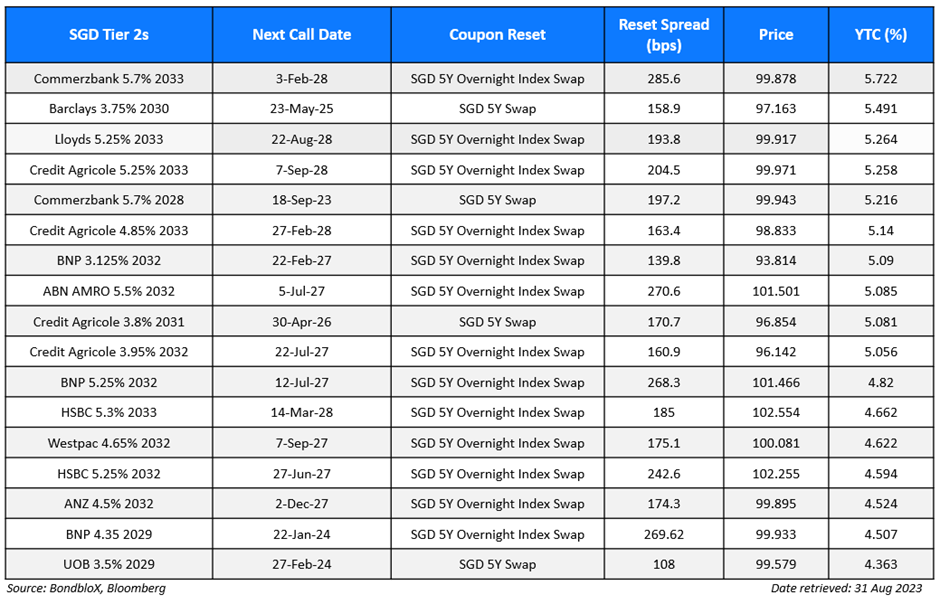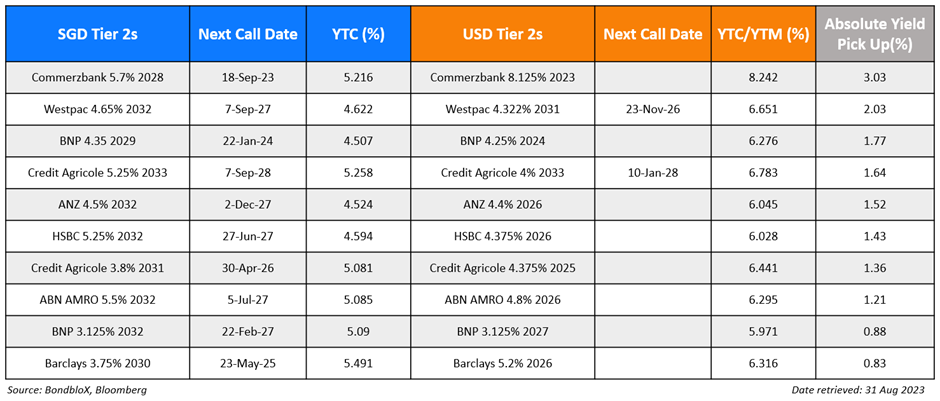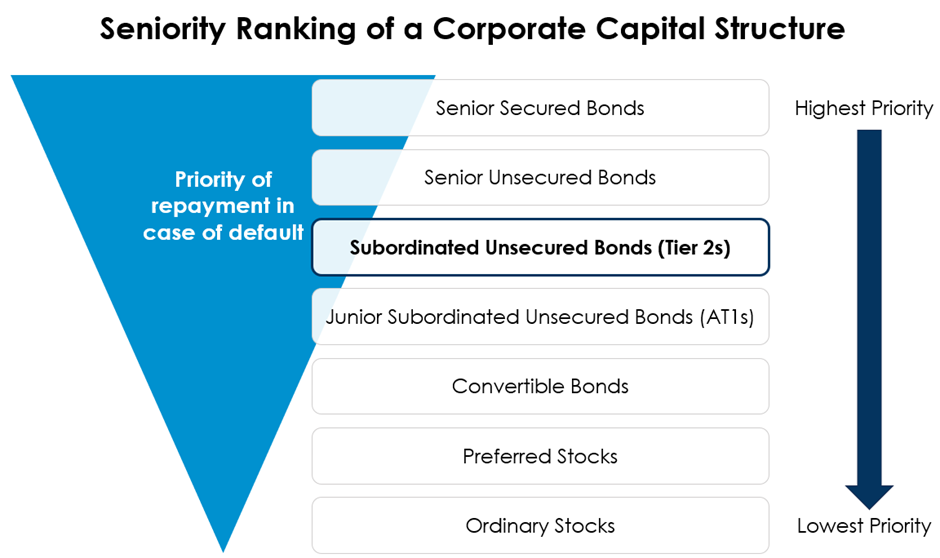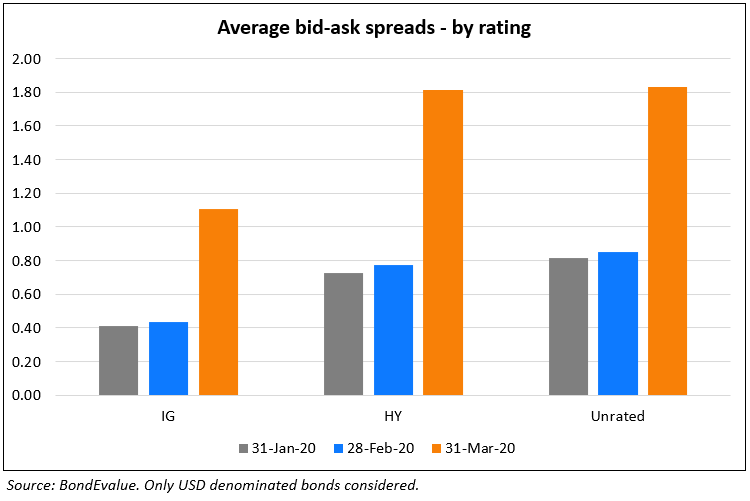This site uses cookies to provide you with a great user experience. By using BondbloX, you accept our use of cookies.
Bond Market News
Credit Agricole and Lloyds Stage Comeback for Singapore Dollar Tier 2 Bonds
August 31, 2023

Recently, French lender Credit Agricole tapped on the Singapore dollar bond market for the second time this year, raising S$350mn by issuing a 10NC5 Tier 2 bond (scroll down for a refresher on bank capital) at 5.25%. This is the second European bank that has issued a Tier 2 note in Singapore since the Credit Suisse AT1 wipeout in March 2023, signaling early signs of recovery in the bank capital bond market in Singapore. Aside from Credit Agricole, Lloyds forayed into the SGD market for the first time two weeks ago, issuing a similar 10NC5 Tier 2 that priced at the same level of 5.25%. OCBC is the only other bank to tap the SGD bond market till now, issuing a 4.5% AT1 callable in 2029 earlier in August.
In the table below, we have compiled a list of SGD Tier 2 bonds in descending order of yield-to-call.

Going a step further, we put some of the above SGD Tier 2s up against its USD comparables. In our selection of USD comparables, we picked bonds from the same issuer with the closest call/maturity dates.

As seen in the table, USD bonds provide an absolute yield pickup of about 1-2% over its SGD counterparts and could possibly more liquid as well.
With more Tier 2 notes being issued by banks and with its emergence as a “safer” class of bonds compared to AT1s, it will be interesting to continue to monitor this space.
Not sure what Tier 2 bonds are? We’ve got you covered.
What are Tier 2 bonds?
For the uninitiated, Tier 2 bonds are debt instruments issued by banks to meet their regulatory Tier 2 capital requirements. These requirements are set by Basel norms where Tier 2 capital is considered supplementary capital as compared to Tier 1, which is considered as core capital. Thus, a bank’s total capital is calculated by adding its Tier 1 and Tier 2 capital.
Where do Tier 2 bonds sit on a bank’s capital structure?

As seen in the image above, Tier 2 bonds, while subordinated, rank senior to Tier 1 capital. Tier 1 capital consists of common equity tier 1 (CET1) and additional tier 1 (AT1) capital. CET1 consists of a bank’s common shareholders’ equity while AT1 consists of preferred shares and hybrid securities or perpetual bonds.
Tier 2 capital on the other hand, consists of Upper Tier 2 and Lower Tier 2 wherein the former is considered riskier to the latter. From a bond investor’s perspective, Tier 2 bonds are senior, and therefore less risky compared to AT1 bonds as AT1s would be the first to absorb losses in the event of a deterioration in bank capital, as was the case with Credit Suisse.
Go back to Latest bond Market News
Related Posts:








